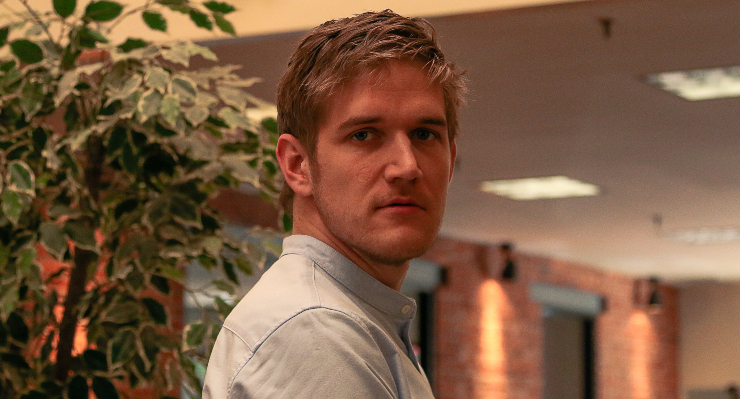
In Both Sides Now, author and ethicist Leslie Cannold presents two sides of an argument and then it’s over to you: what do you think is true, and what do you think Cannold really believes?
Today: does the fact that US comedian and singer/songwriter Bo Burnham’s special portrays some fairly significant inaccuracies mark it as dishonest, or even unwatchable?
Yes: The show’s success lies in its truth and many fans were worried about the entertainer after watching. He should have been more honest. No: Simply put, no art has an obligation to accuracy.
Yes
If you haven’t seen Bo Burnham: Inside, you should. As some may know — but as Burnham reveals in the special — he had to quit performing live for five years because of panic attacks. He was planning on returning to the stage in 2020 when COVID-19 hit. Written, composed, performed, directed, edited and produced by him, Bo Burnham: Inside chronicles the experience of one vulnerable man during lockdown.
Or does it?
While I was a follower of Burnham’s work, I knew little about his personal biography. I don’t do celebrity profiles and frankly didn’t feel I needed to delve deeper into the 30-year-old’s background given what felt like the raw autobiographical nature of his oeuvre.
But I was wrong. What many of us have come to learn is that while Burnham’s angst about both his emotional needs as a performer and his rich white male privilege may be authentic, the biographical and chronological set-up of the special are not.
To wit: Burnham did not spend 2020 locked in a cramped room eating cereal with only himself for company. Instead he spent it with his dog and his long-time girlfriend in a nice house.
I don’t begrudge Burnham any of the human and creature comforts that he enjoyed during the pandemic and that his well deserved success has made possible. I think he is the most compelling and talented performer of his generation. But this may be the problem. What connects me to his work is its meticulous and raw nature. The way the specificity of his pain pulls me in and helps me confront my own demons through the courageous way he displays the inner workings of his heart and mind. The connection he creates between us — performer and audience — by being so vulnerable.
But that only works if the vulnerability is authentic. When I found out that the special’s stark internal landscape — the reality of which seemed reinforced by the increasing length and dishevelment of Burnham’s hair as his confinement went on — was schtick, I feel duped. It also made me question what else about the performance I should distrust.
Burnham hadn’t done anything wrong. In contrast to journalism, fiction, non-fiction and history, there are no rules about what Slate’s Lili Loofbourow calls “the obligation to truth” for the new confessional meta-comedy genre in which Burnham thrives and, arguably, has helped create.
But should there be? I think yes. Because it would have stopped me and others from worrying, when the credits began rolling, whether Burnham was alright. And making efforts — mine was calling my son, who’s a fan — to find out.
Plus it would have let us know what the real stakes were in Burnham’s story, allowing us to choose, as audience members and fellow humans, how much we gave of our hearts.
No
Comedy of any sort, including the new self-confessional types, does not have an obligation to accuracy. Like all other fictional art forms, its only debt is to truth. Or as Ken Kesey puts it: “Being accurate is not necessarily being honest.”
Kesey should know. His 1962 depiction of electroconvulsive therapy in One Flew Over the Cuckoo’s Nest seared its way into our collective consciousness, deterring patients from undertaking the treatment — which can be uniquely effective for some serious conditions — to this day.
Everyone knew when they read the book or saw the 1975 film that it was fictional. Nevertheless it got under our skin and since then we’ve treated it like fact.
To me this suggests that the truth problem seen in Bo Burnham: Inside is one that arises from all good art. Which is that it feels real because it captures an emotional truth accurately.
What is emotional truth? According to Psychology Today, it’s “what you feel about a situation [that] sometimes … has nothing to do with actual facts”.
In his special Burnham uses the artifice of being trapped on his own for a year in one room as a metaphor for being trapped inside his own anxiously chattering head. While this aspect of the performance is not literally accurate, it helps the artist deliver his emotional truth about what it’s like to live with anxiety.
Consider the last public service announcement you saw about mental illness on TV or the back of a toilet door at the pub. Which moved you more? Bo Burnham: Inside or that ad? Which has stayed with you? One Flew Over the Cuckoo’s Nest, or that ad? I rest my case.
Expecting artists like Burnham, Hannah Gadsby or James Acaster to provide factual accuracy disclaimers would destroy the beauty of their art and its power to change hearts and minds. It’s also impractical. When would they have to do it? In the program? Before the show starts? It’s also not fair given that, to quote Kesey, “in all good faith, one cannot truthfully claim to remember what happened accurately”.
The solution is simple and lies with us as the audience. We must remember that comedy is art and that art draws its power from emotional honesty and integrity, not facts.
Which side do you think Cannold sits on? And what do you believe? Send your thoughts to letters@crikey.com.au with Both Sides Now in the subject line.








In the words of Bo Burnham himself, “Art is a lie. Nothing is real.”
What is the point in writing this?
This is a fascinating write up and I appreciate the look at both sides of the argument.
Oooh! “..emotional honesty and integrity”; that could get one out of a few scrapes.